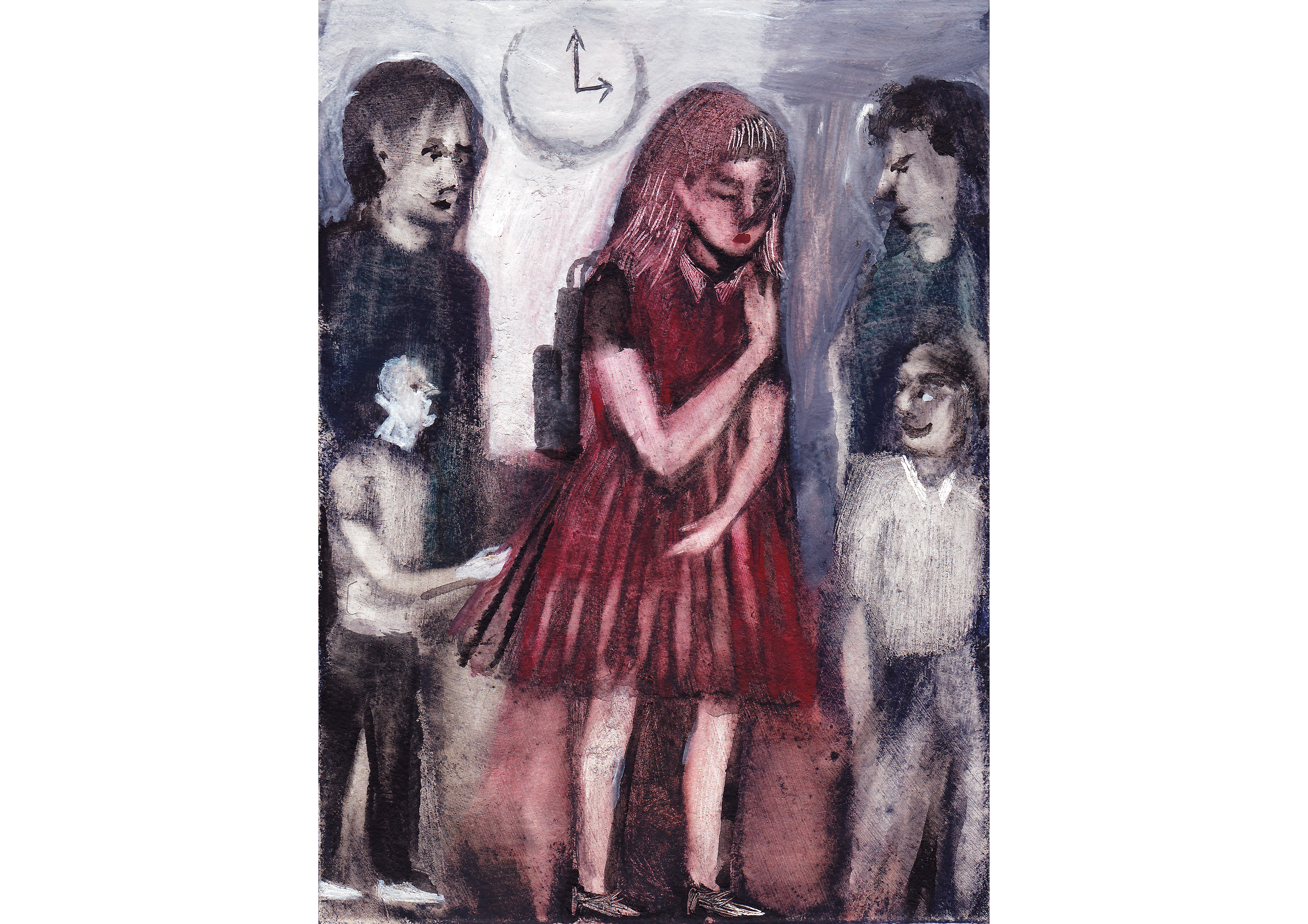'BOYS WILL BE BOYS'
An insight into a girl's education at an all-boys school
By Abigail Clark

Illustration by Lise Goossens
A recent study by analysts at SchoolDash showed that single-sex schools performed better in GCSE results than co-ed schools, and even more interestingly, all-female schools outperformed male dominated schools.
In the midst of these current debates, my personal secondary school experience was a unique one, and sheds a different light onto the complications of gender segregated schools.
I first attended an all-girls, selective school from the ages of 11-16, and though the environment I found myself acting catty and gossipy at times (as is often to be expected in all-girls schools). However, I am extremely grateful for the sense of pride and collectiveness an all-girls environment instilled in me, especially when considering the transition I made at 16. Though it is common for sixth-form and college environments to be mixed, I opted to attend the local boy’s Grammar in my area which had a mixed Sixth form. This created the distinctive and rare situation of being one amongst roughly 40 girls in a sixth form of 200 and surrounded by almost 1000 younger boys.
Immediately, there was an underlying tension that followed me and other females during our time at the school, as you become hyper aware of your gender. In day-to-day life as a cisgender woman, I am lucky enough to only be forced to confront my own gender when choosing a toilet to use in public, yet at a boy’s school, the simple fact of wearing a skirt amongst a sea of trousers singles you out. I use the term ‘boy’s school’ loosely, as the institution had to drop the gender specific part of their name due to the inclusion of females in their sixth form, in an attempt to make us feel more like valued students at the school. Nevertheless, this attempt was in vain as we were always aliens in this environment. It seemed a strained effort for teachers to remember to include ‘…and girls’ on the end of any address to the sixth form, and there was an instilled feeling of it being a Boy’s School with a few extra girls to add diversity.
Despite this, feeling like an outsider was not a personal issue for me. I was well aware that I was stepping into a school where the majority of the boys had spent almost 7 years together and of course this comes with a reinforced sense of community, and anyone new cannot hope to be entirely integrated into that. Instead it was the way the younger boys at this school acted around females in their working environment, and how they were so ill prepared by the school in manners and general ethical behaviour towards women.
One incident in my time in this school stands out as epitome of how single-sex environments affects boy’s development. Throughout my first year at the school, I was on the receiving end of jibes and sexual remarks in the corridors from younger boys, and though this was disturbing due to their young age (the main perpetrators I later found out were 12, I was almost 18 at the time) I shrugged it off under the age old mistake that ‘boys will be boys’. Similarly, these boys found my social media accounts, would make remarks in the streets when they saw me, and would follow me and other girls around the school in large (and intimidating) groups. However, as this catcalling progressed to a physical state, culminating when a year 8 boy put a 10-pound note into my breast pocket followed by the remark ‘that’s for later’, it became evident that this behaviour was not acceptable. A female teacher who witnessed this exchange reported it and this initiated conversations between staff and the eventual suspending of a handful of the year 8 boys who had been behaving in this way towards me for an extended period of time. Upon reflection of these events, it is probably most worrying that I, nor any of my friends, really recognised that this was unacceptable behaviour. It was happening simultaneously to many other girls in the sixth form and became almost a part of the culture of the school, dismissed with remarks about the ‘obsessive year 8s’.
My own personal experiences, which are mild in comparison to what many females endure on a daily basis, formulate a strong case for why boys need familiarity with, and education on, the correct ways to interact with women from a young age. The issue at this school was that the boys from the age of 11 had been separated from girls, creating an almost sub-human, removed association with us, so that when we entered their school, we were seen as almost their ‘play-things’ that they could shout at and incorporate into their jokes, rather than as students in our own right. This fault doesn’t necessarily come down the segregation of genders, but more the school’s own responsibility to teach boys that this behaviour is unacceptable. These types of encounters went on for almost 5 months before reported, and it took a suspension to scare the other students into stopping, rather than because they realised it’s a vulgar way to treat women.
Therefore, it would seem a beneficial decision to integrate boys and girls from a young age, so that boys mature alongside girls, and are comfortable interacting with them, as after all a single-sex environment is not a good model of the working world, a transition which schools should be preparing students for. However, as I mentioned earlier my time at an all-girls school provided me with the assertiveness and confidence in my abilities to thrive in an environment where females were the minority. Growing up around other girls, there was never a pressure to prove yourself and your intelligence. The common sexist misconception that males are better at mathematical and technical subjects was a distant hum in a girl’s school, we were free to make subject choices and pursue careers without gender playing a role. I didn’t pick English because it was girly, or pick Maths to try and prove myself, I just chose the subjects that I liked and was confident in.
All this considered, it seems that the issue is not with whether co-ed schools or single-sex schools outperform each other, it is instead with the attitudes and stereotypes that bread in these environments.
I strongly believe the presence of a female in a classroom is needed to dispel common misconceptions about girls that develop amongst young boys, but I also understand the importance of female’s needing time to ally with other girls and realise their own abilities, removed from male prejudice.
The crux of it is, girls should not need to be educated away from boys, in order to excel in their own right. It is the responsibility of the schools, to shut down male prejudice, correct any sexist behaviour, but also to build up the confidence of their female students, so that boys and girls can co-exist, and help each other reach their full academic potential.
Art by
Words by
Share this article

